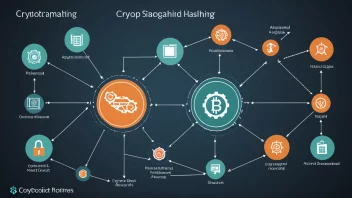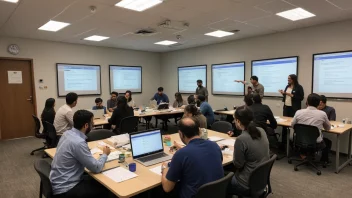Introduction
In today’s digital landscape, where software development increasingly relies on cloud environments, understanding cloud security has never been more critical. This article will guide you through essential steps to implement cloud security best practices in your software development processes. You will learn how to secure your applications, protect sensitive data, and ensure compliance with industry standards.
Step 1: Assess Your Current Security Posture
The first step in enhancing your cloud security is to assess your existing security posture. This involves identifying potential vulnerabilities and evaluating the effectiveness of your current security measures.
- Conduct a Security Audit: Review your current cloud architecture and security protocols.
- Identify Vulnerabilities: Use tools like penetration testing and vulnerability assessments to find weaknesses.
- Evaluate Compliance: Ensure that your practices align with regulations such as GDPR, HIPAA, or PCI-DSS.
Step 2: Use a Secure Cloud Provider
Selecting the right cloud provider is crucial for maintaining security. Consider the following factors while choosing a provider:
- Security Features: Look for built-in security features like encryption, identity management, and DDoS protection.
- Compliance Certifications: Verify that the provider complies with relevant industry standards and certifications.
- Reputation and Trust: Research the provider’s security record and customer reviews.
Step 3: Implement Data Encryption
Data encryption is a critical component of cloud security. It protects sensitive information by converting it into an unreadable format. Follow these steps to implement encryption:
- At-Rest Encryption: Encrypt data stored in cloud databases and storage solutions.
- In-Transit Encryption: Use protocols like TLS to secure data transmitted between users and cloud services.
- Manage Encryption Keys: Implement robust key management practices to secure encryption keys.
Step 4: Implement Identity and Access Management (IAM)
Proper identity and access management controls who can access your cloud resources. Taking the following steps can enhance your IAM practices:
- Use Role-Based Access Control (RBAC): Assign permissions based on user roles to minimize access.
- Enable Multi-Factor Authentication (MFA): Require additional verification methods for accessing sensitive data.
- Regularly Review Access Permissions: Conduct periodic audits to ensure that access is appropriately managed.
Step 5: Monitor and Respond to Security Threats
Continuous monitoring and response to security threats are essential for maintaining a secure cloud environment. Implement these practices:
- Set Up Logging and Monitoring: Use cloud-native monitoring tools to track access and detect anomalies.
- Establish an Incident Response Plan: Create a plan to address security breaches promptly.
- Conduct Regular Security Training: Educate your development team on cloud security best practices and threat awareness.
Step 6: Keep Software Updated
Regular software updates are essential for security. Follow these steps to ensure your applications remain secure:
- Automate Updates: Set up automated updates for your cloud services and software.
- Patch Vulnerabilities: Regularly apply patches to address known vulnerabilities.
- Stay Informed: Keep up with the latest security advisories and updates from your cloud provider.
Conclusion
Implementing cloud security best practices is essential for any software development team working in a cloud environment. By assessing your security posture, choosing a secure cloud provider, encrypting data, implementing IAM, monitoring threats, and keeping software updated, you can significantly enhance your cloud security. Remember, security is an ongoing process, and staying informed about emerging threats and best practices is vital for protecting your software development efforts.






